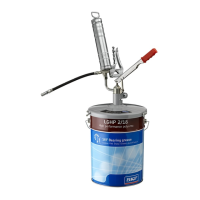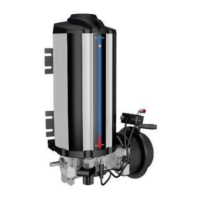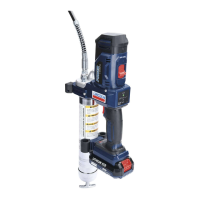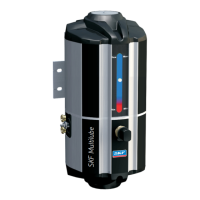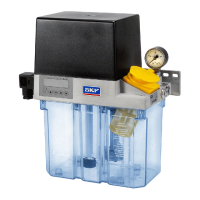14
2. Lubricants
General information
Lubricants are selected specifically for the relevant application. The manufacturer or operator of the machine should
ideally make the selection in consultation with the supplier of the lubricant. If you have no or little experience in selecting
lubricants for lubrication systems, please contact us. We would be happy to assist you in selecting suitable lubricants and
components to build a lubrication system optimized for your application. Consider the following points when
selecting/using lubricants. This will spare you potential downtime and damage to the machine or lubrication system.
Material compatibility
The lubricants must generally be compatible with the following materials:
• Plastics: ABS, CR, FPM, NBR, NR, PA, PET, PMMA, POM, PP, PS, PTFE, PU, PUR
• Metals: steel, gray cast iron, brass, copper, aluminum
Temperature properties
The lubricant used must be suitable for the specific ambient temperature of the product. The viscosity approved for proper
functioning must neither be exceeded at low temperatures nor fall too low at high temperatures. For the approved
viscosity, see the “Technical data” chapter.
Aging of lubricants
Based on experience with the lubricant used, checks should be conducted at regular intervals defined by the operator, to
determine whether the lubricant needs to be replaced due to aging processes (oil separation). In case of doubt regarding
the continued suitability of the lubricant, it must be replaced before the system is started up again. If you do not yet have
any experience with the lubricant used, we recommend conducting a check after just one week.
Avoidance of faults and hazards
To avoid faults and hazards, please observe the following:
• When handling lubricants, observe the relevant safety data sheet (SDS) and any hazard labeling on the packaging.
• Due to the large number of additives, some lubricants that meet the pumpability requirements specified in the manual
are not suitable for use in centralized lubrication systems.
• Whenever possible, always use SKF lubrication greases. They are ideal for use in lubrication systems.
• Do not mix lubricants. This can have unpredictable effects on the properties and usability of the lubricant.
• Use lubricants containing solid lubricants only after technical consultation with SKF.
• The lubricant’s ignition temperature has to be at least 50 Celsius above the maximum surface temperature of the
components.
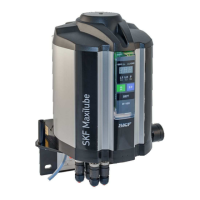
